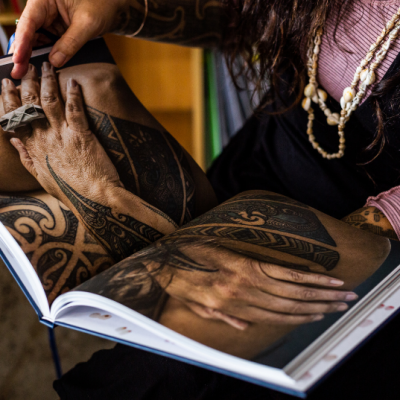Creative Patapatai
Welcome to PIXelated, a group exhibition showcasing the fusion of digital paintings and sculpting. It expresses the visions of Roxanne Milson, Troy Coker, Lou Agas, Jody Linton, and Sam Allen, as they harness Adobe Photoshop, ProCreate, Maxon Cinema 4D, Blender, and ZBrush, unveiling their passion for artistry without AI-generated crutches.
The PIXelated group exhibition is showing at The People’s Gallery from Saturday 11 November to Tuesday 28 November, with an opening preview from 5:30pm on Friday 10 November.
Your occupation, job title, artistic discipline (or very brief description of what you do)
Jody Linton: My day job is in freelance design and animation. It covers a broad range of marketing material but my main focus is on product visualisation. My art is usually created in downtime; I’m most passionate about digital sculpting which results in producing renders for fine art prints and 3-D printed sculptures.
Lou Agas: I’m a motion graphic designer, animator, and video editor. I’m also a visual artist; I paint digitally using photoshop, and traditionally using acrylics.
Roxanne Milson: I work as an artist and a horse riding instructor. I’m able to do the two things I love most: art and working with horses.
Sam Allen: Human, artist, doing things that interest me (mainly murals).
Troy Coker: I’m a 3-D artist working in game development. My day job primarily consists of making stylised characters and environments. In my personal time I enjoy pencil drawing or creating artworks in Zbrush and Blender.
What cities/towns have you lived in (or spent more than a few months in) beginning with the place of your birth?
JL: I was born in Hamilton where I did a Bachelor of Media Arts. I spent a bit of time in Holland and have since lived in Tauranga.
LA: I was born, raised and had a family in the Philippines. We moved to Tauranga, New Zealand in 2010.
RM: I grew up on the Gold Coast, Queensland, Australia. I’ve been in New Zealand for the last nine years, here in Tauranga.
TC: I was born in Tauranga and lived there for most of my life. Recently I moved to Auckland for my job in the games industry.
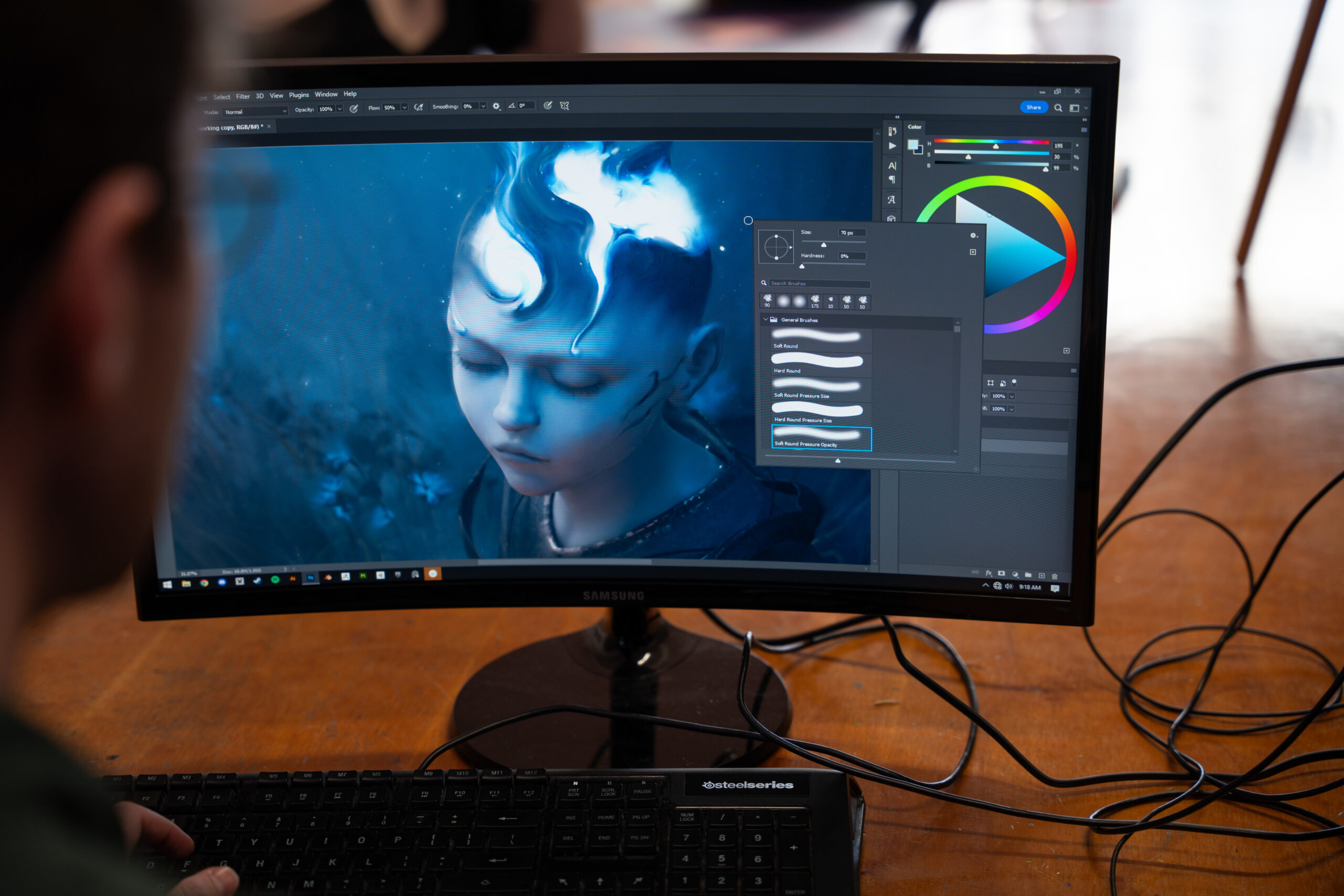
How do you deal with creative blocks, and do you have any strategies for overcoming them?
JL: Usually involves closing my eyes and seeing what appears. I sometimes do this when sketching, going to sleep or listening to music; it can also happen while watching a movie. It seems be more internal and true to self expression.
LA: A creative block, to me, is basically stress. And I usually just take a break and breathe. Music does wonders for my mood. Perhaps a change of scenery. But I try to go at it again and not let the break get hold of me for long. A day or two is usually ok, but I consider a week’s break too long. Sometimes an extended break may lead to fear, or procrastination, which aggravates the situation.
RM: Generally I have to deal with too many ideas and never enough time to commit to them all. I definitely think getting outside is the best way to reset when you get blocked, creatively or otherwise. I’m glad I have my horses and lessons I teach that get me the fresh air and life lessons to keep my creativity alive.
TC: It is easy to tie my identity to trying to make good art – however, this leads to stress when I fail or struggle. The stress will encourage creative blocks. Instead I try to find enjoyment from the act of making art, no matter how it looks. By connecting my self worth to the effort I’m putting into my art, I can feel good about myself even if I don’t like the end product.
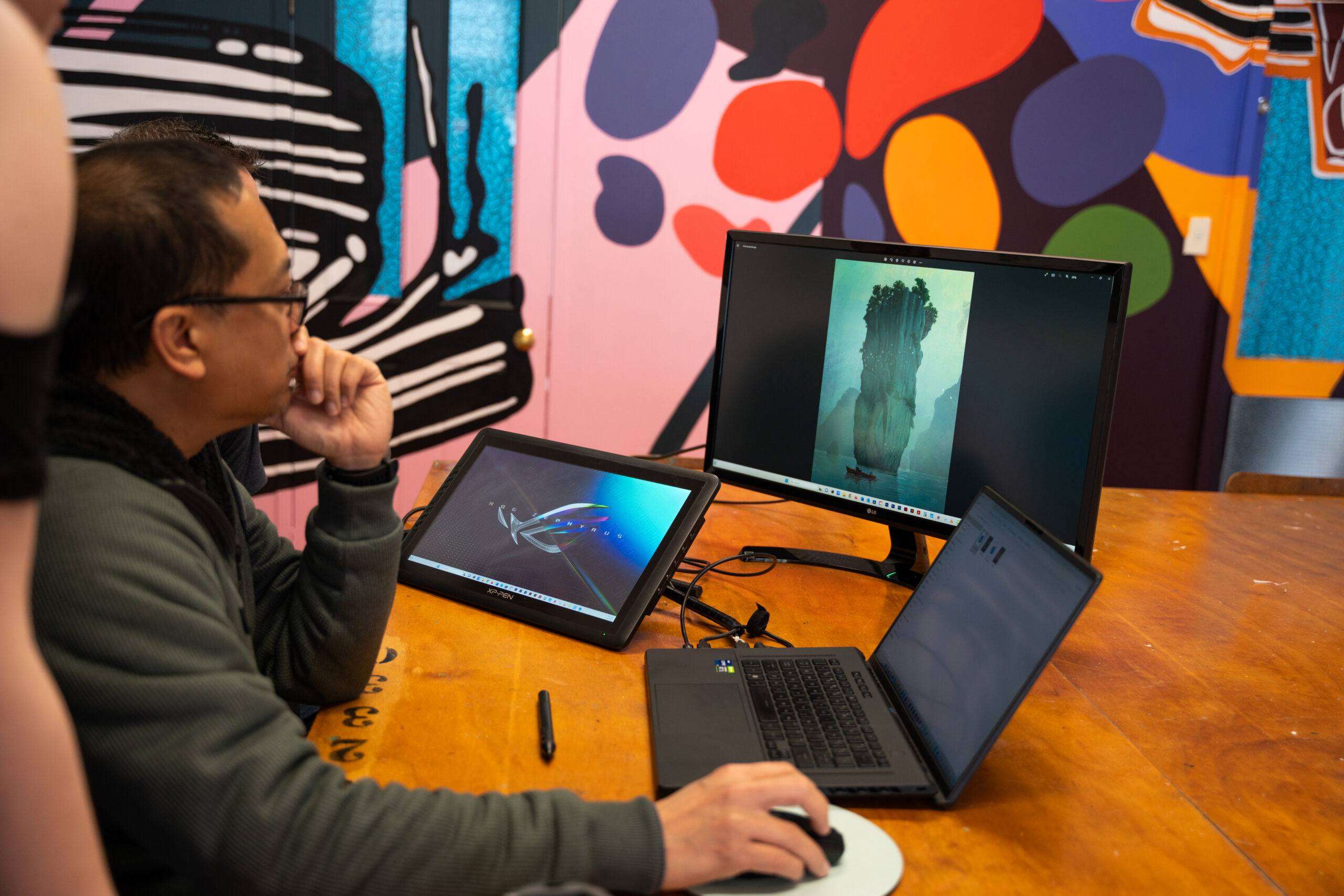
Do you find solitude essential to your creative process, or do you thrive in collaborative environments as well?
JL: My art is done in solitude, but sometimes I bounce ideas around with family. For commercial work there’s always some form of collaboration. I think I’ve grown and now work well in a collaborative environment and am able to comfortably express ideas in a group as well as take on feedback and change direction if needed. Working collaboratively is great because you can really focus on the skills you’re good at rather than trying to do everything.
LA: In my work as motion graphic designer and video editor, it is essential to collab with other creative people like script writers, creative directors, other animators, as well as the client. But I love the solitude of painting. It’s like meditation. It refreshes me. Doing a balance of the two really brings out the best in me.
RM: I find doing my art in solitude the most effective way to get my work done. I can go off on tangents with my work which would probably annoy someone I’d collaborate with.
What’s your favourite Bay of Plenty landscape, park, building, location, suburb, or side street? Why?
RM: Give me rolling hills, trees and lakes! I want rural, farmland, places where I’d find horses and animals in general.
TC: Otanewainuku forest is a beautiful place to walk. Getting out into a forest is important for me, as it helps my creative process and maintains a sense of calm.
What’s an average day in your life at present?
JL: A usual day for me is getting up and going for a walk, then checking emails and working through what work I need to complete for that day. Most jobs can range from a few hours to a few months, so a walk first thing in the morning not only gives me some daily exercise but some time to mentally prepare for what lies ahead. If work is quiet, I can work on art and sculpting.
LA: Working at home is quite flexible so it’s easy to juggle things. When deadlines are pressing, I can work until late at night or even into the wee hours of the morning. Otherwise, I start my day with a light exercise routine. Breakfast, coffee, and errands after that. Start work around 10am. Probably paint if there’s not much animation work. Wind down around 5 or 6 pm and start prepping for dinner.
RM: At the moment each day is different. One day I’ll have a full day of doing art in my studio. The next day I’ll be teaching riders and training horses and then another will be full of studying.
TC: I make art at my job for eight hours and then I come home and make more art until I go to sleep. Sometimes I’ll let myself play games or socialise.
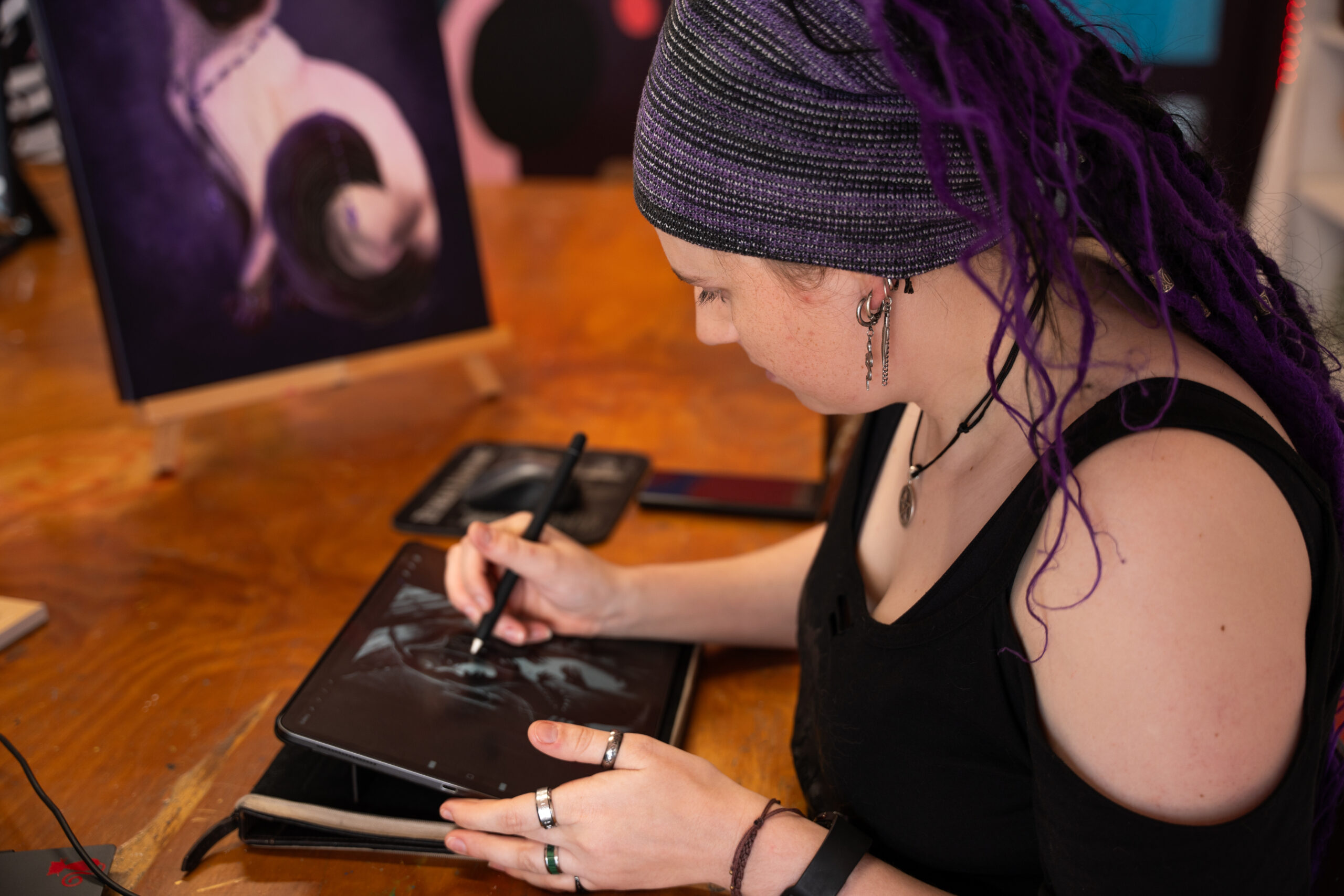
How do you want your art/work to make viewers feel?
JL: Intrigued, curious, shocked. I hope to create beautiful works that people perceive as imaginary worlds grounded with modern themes and I hope they understand the symbolic themes behind the works. I love details but I try to balance them with a sense of calm and blend the form with clear space, sort of like a visual duality where it emerges from darkness into the light. I also try to think how the subject could work as a real life object that you can hold and touch – is that object smooth, rough, sharp, bumpy or a combination of different textures?
LA: I want my paintings to be moody and emotive. I want the viewer to feel some sort of attachment by bringing them to a similar personal experience.
RM: My art, I like to think, makes people smile. Whether it’s an amused smile, or a peaceful smile, maybe even a smile of simple joy. A lot of my work is animal based with a whimsical or fantasy aspect.
TC: My art is made for myself, so I don’t have specific feelings that I’m trying to convey to the viewer. I would rather they come up with their own connotations for my work.
What does success look like for you?
JL: Being healthy and having time to spend with my family. Finding better ways of balance time between family, fitness, work and art would be great.
RM: Success to me is peace. Success to me is when I am able to do what I love and I am able to do it without fear and doubt.
TC: Being able to pay a mortgage instead of rent.

If you didn’t become an artist, what would you be doing?
JL: If I wasn’t doing design, animation and art I think I’d still be doing something creative. One of my goals is to learn how to make guitars – and I’ve had that goal for a long time now. Doing something with my hands would appeal to me and guitar building would be a combination of creativity, making things and my interest in music. I also think I could be good at framing, which is also a combination of being creative and doing stuff with my hands.
RM: If I wasn’t doing art, all my focus would be on horses. I’d be teaching more people not only to ride, but to connect with their horses. It’s stuff I’m doing now but I’d be doing it full time instead of part time.
How do you know when an artwork is finished?
LA: This is not a simplification, but I know it is finished when I get tired of it.
RM: When I know it’s nearing the finished stage, I take time away from it. I look at it through a photograph also. Different perspectives help catch anything I missed. It’s mostly a feeling though. It’s like you have a full jar of magic art potion and as you’re working on it, the jar empties as you pour it into the art. When it’s empty, you know. You feel it.
TC: There never really is a finish to an artwork, I just get bored of it and decide to move onto something new. Getting an artwork to 90% is good enough for me, the final 10% can drive you nuts.
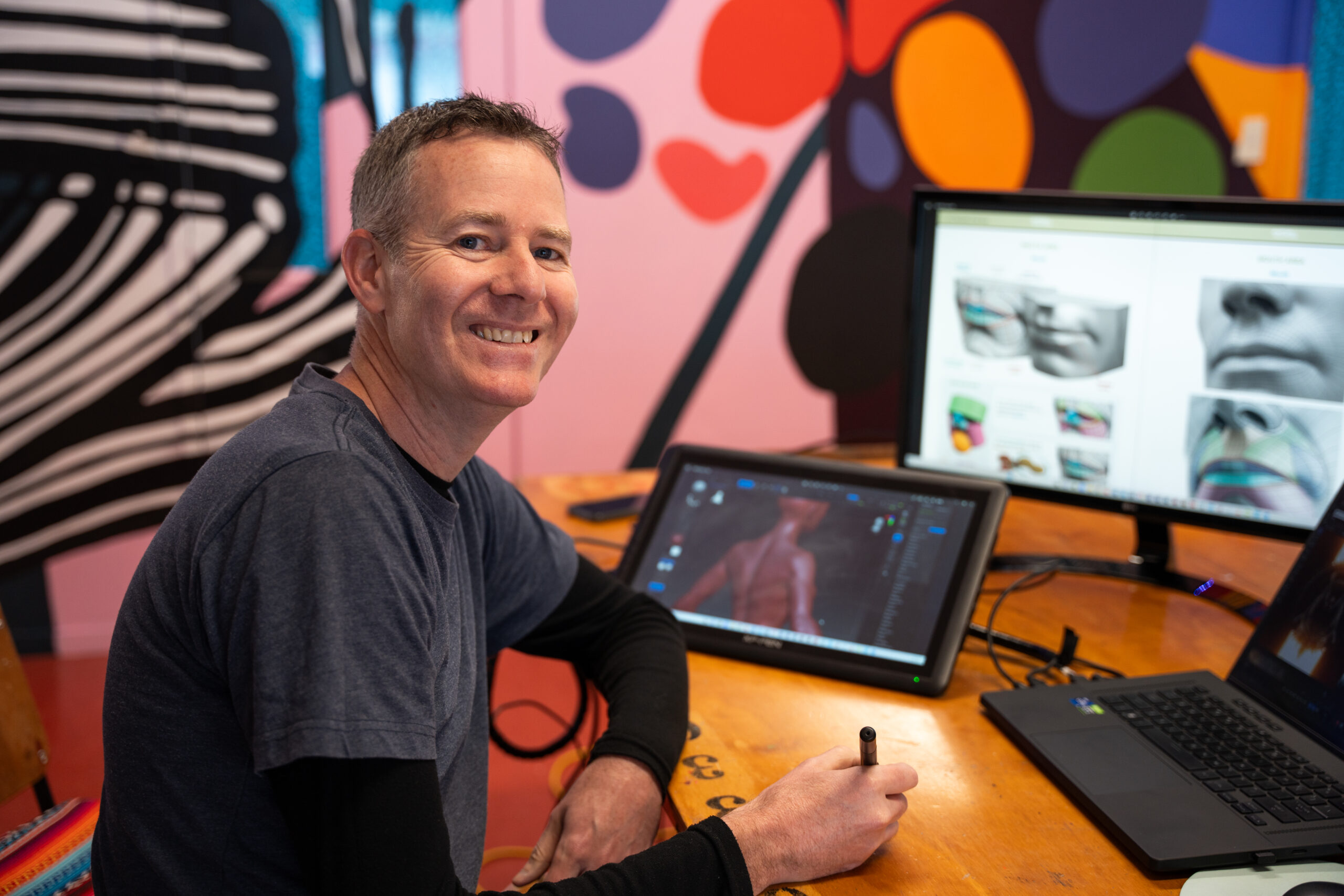
For you as a creative person, who are three influential artists or thinkers?
JL: Oh, it’s so hard to just pick three. Here are four. I’m currently really liking artists like César Orrico, Tomàs Barceló, Massimiliano Pelletti and Ivan Larra. All figuritive and bust sculptors, and all very different from each other. I really love the mix of traditional with new approaches.
RM: Abigail Larson, Peter Morhbacher and Allen Williams. These artists are ones I have loved since I could explore artists over the internet. When I see their work, I just want to draw and create and weave magic.
SA: Kim Jung Gi, Master of Drawing. MF Doom, Master of Rhymes. George Carlin, Master of Questioning Everything. Unfortunately all three of them died too soon and in between events where they were going to share their art with the world. It might be a curse to be admired by me. These three challenged what I thought was possible with art and showed me how art can change perceptions, which changes actions, which changes the world.
TC: Vitaly Bulgarov, H.R. Giger, Arnold Böcklin.
If you went away from the Bay of Plenty for a long time and then came back, what are the first three things you would do or visit?
RM: First I’d see my horses and spend the day with them. Then I’d go eat lots of yummy treats from But First Dessert in Tauranga CBD. Thirdly, I’d check out what’s new in the Historic Village and see what the creatives at The Incubator have been doing.
SA: I am currently away for six months in Africa and I have a plan of what I’m going to do when I get home. First, pet the family dogs. Second, say hi to family and everyone at The Incubator. Third, a cliché with a naughty twist: go up the Mount for the sunrise, go for a surf, then go to Copenhagen Cones for breakfast.
TC: Visit my Mum and Dad, walk to the summit of Otanewainuku, and catch up with old friends.
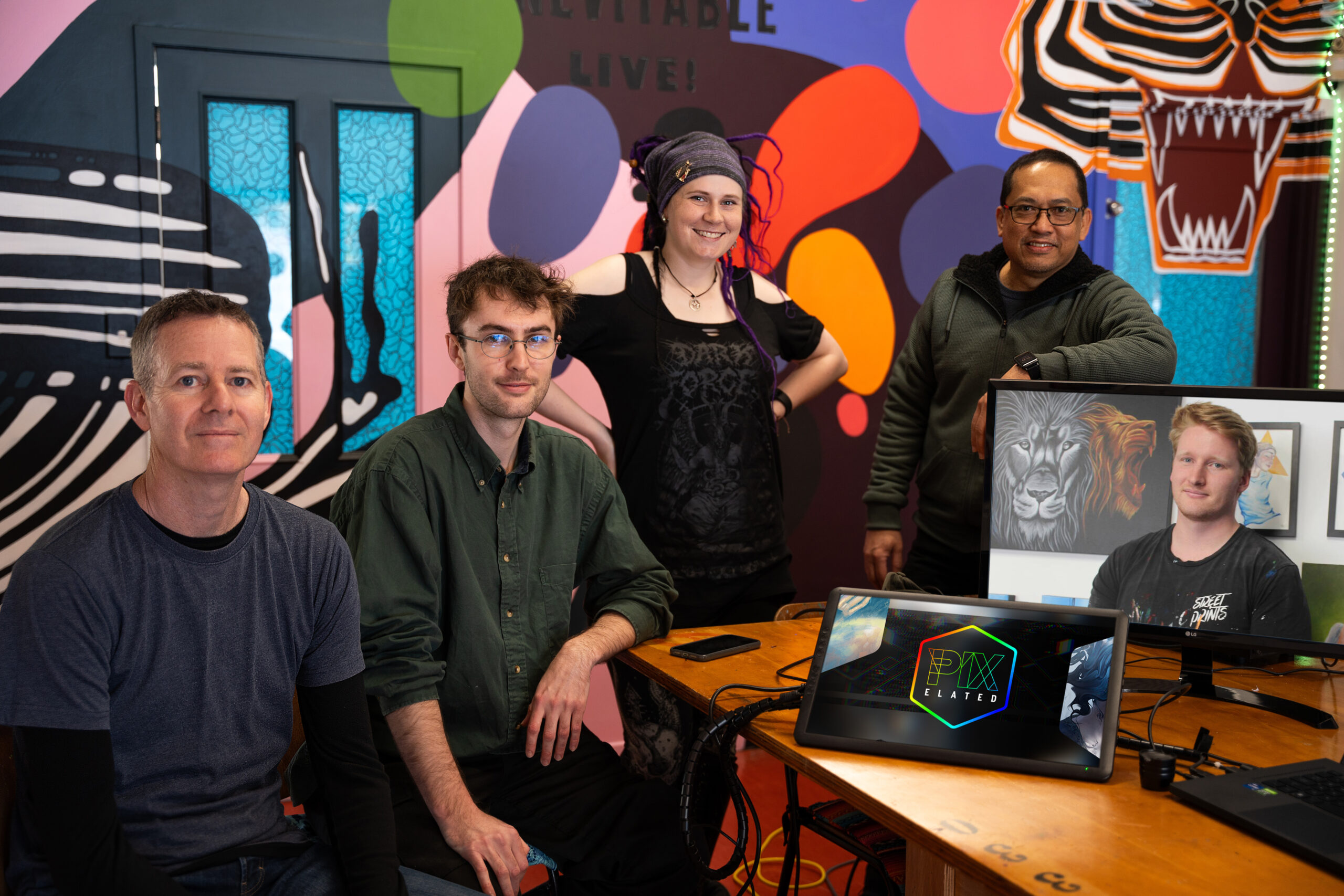
Looking back at your teen-age self: what one sentence describes that person?
RM: Oh man, if my teenage self had known where I’d be now, well, I don’t think they’d believe it. Teenage me was a nocturnal creature writing stories and creating character art all night long and enduring the day.
TC: Irrational.
What are you planning for 2024 that nobody knows about yet?
SA: The Pretty Big NZ Mural Tour. I have explored so many diverse places but not my own backyard. It’s time to experience the gift I was given by being born in New Zealand. The plan is to travel around the country in a van and paint murals everywhere I go, while exploring some of the lesser-known places and discovering hidden gems. I’ve got the plan, now it’s time to work out how I’m going to make a living while living the dream.
In one sentence, can you define art?
JL: A visual or auditory expression of an idea achieved through a creative process?
RM: Art is magic created by magicians brave enough to share their souls on canvas.
SA: No, I can not.
TC: Anything you want it to be.
What is missing or lacking from your Bay of Plenty community or environment?
RM: The Bay of Plenty is in need of more unique, creative spaces. Places like The Incubator in the Historic Village are doing their best to form a creative hub with galleries, an old school cinema, creative events and workshops. We need more of this, get art and creativity all over the place!
Name a few films that you consider profound, moving or extraordinary?
RM: Oh man, I could name a few alright! My number one movie is Edward Scissorhands by Tim Burton. It’s visually beautiful as much as the story is. The Lord of the Rings trilogy by Peter Jackson is a work of passion and pure creative genius from the team at Weta. Finally I’ll say Dead Poet’s Society is a movie that is incredibly powerful and everyone should watch it.
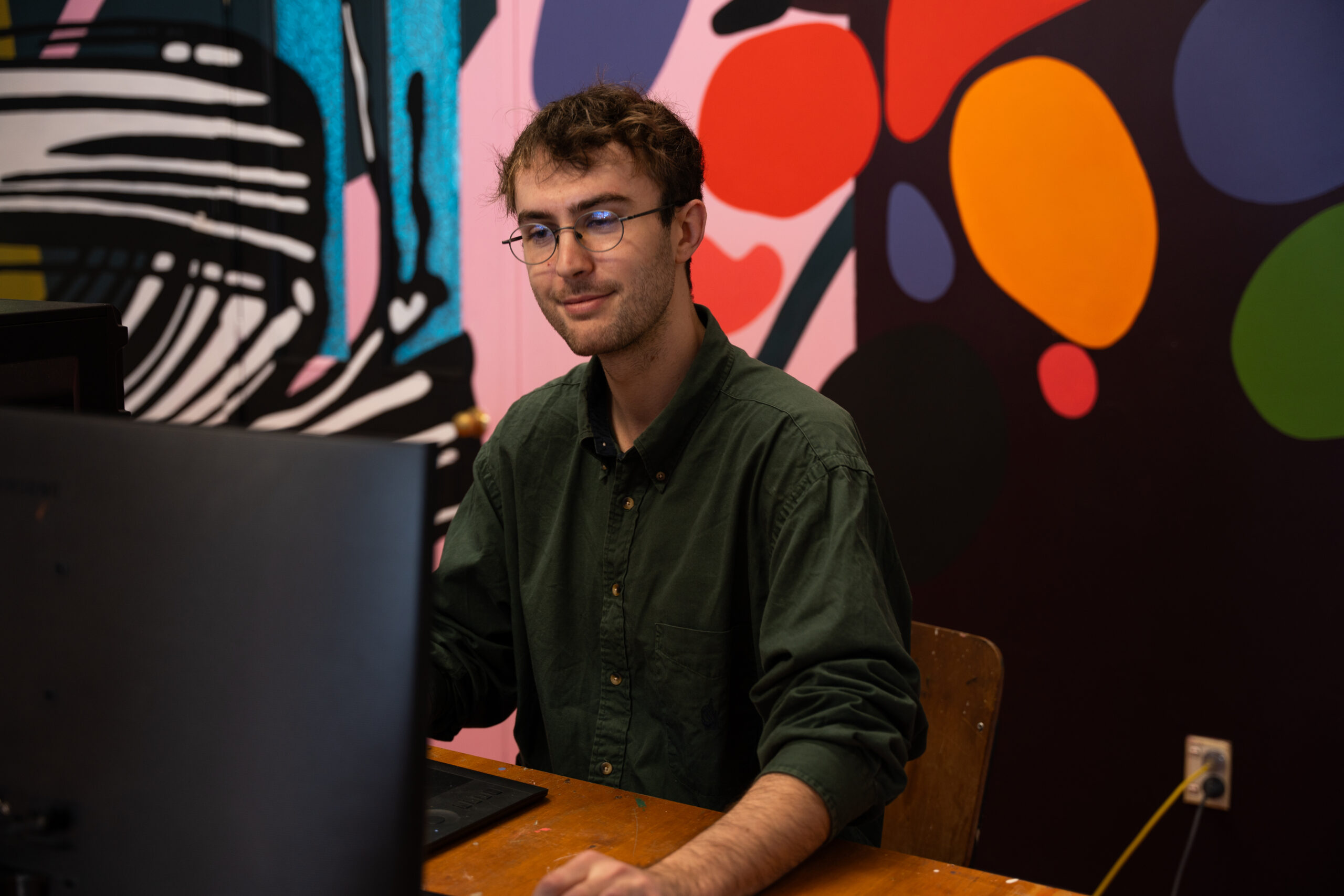
What was your first real job, second, third?
LA: I started out as a production assistant for a film production company. Then I was trained as a digital artist and compositor for visual effects in video and film. I also had a stint as a motion control camera guy and visual effects supervisor.
RM: Real job? What’s a real job? I’ll take this question as what my first paid art job was. I was hired to create characters for a student housing business. The second was book cover art for an indie author and then the third was cartoon art of pets.
SA: Being an artist. It is the first job where I really felt like I was living up to my potential and able to give to the world in the best way I can.
How do you balance creativity and technology in your work?
JL: I find discovery through learning works really well for me and the use of technology is a huge part of that. Just like picking up a paint brush, camera or musical instrument, technology is a tool for creating art and developing ideas. Ultimately, the idea comes from within, but technology helps with getting the idea out and developing it.
LA: I love this question as I deal with tech every day. With regards to motion graphics, animation, and video editing, I am very dependent on technology. It means I must, at least, get the average workstation to power the softwares I use. But I don’t think I need to know and keep up with all the endless improvements of these softwares. Creativity would take care of that and keep me competitive… even against AI… (nervous smile). With regards to traditional art, I don’t even think of the latest breakthroughs in paints or substrates. I rely 100% on creativity.
RM: I use a lot of technology in my art as a digital artist. I’ve been using a computer, Adobe Photoshop and a pen tablet for my art for over thirteen years. I’m less experienced with pencils and paint than I am with digital drawing. The two help inspire each other though. I understand colour pencils and painting more because of my digital painting journey.
TC: Technology is just another medium to create art, there isn’t a balance between the two. It is a tool used to enable creativity, the same as any paint brush or pencil.
Where would you like to live, but have yet to?
RM: If I had to live somewhere else, I’d aim for somewhere in Europe or England. I long to see all the countries and beautiful landscapes there. I think it would be incredibly inspiring plus I’d get to see all the bands I never get to see because they never come to New Zealand!
SA: On another planet, in a distant solar system that sustains life. I would love to make art inspired by the different landscapes and creatures that live there. To see how life has evolved to take on different environments.
TC: Raglan and Wellington. I have good friends that have recently moved to these places.
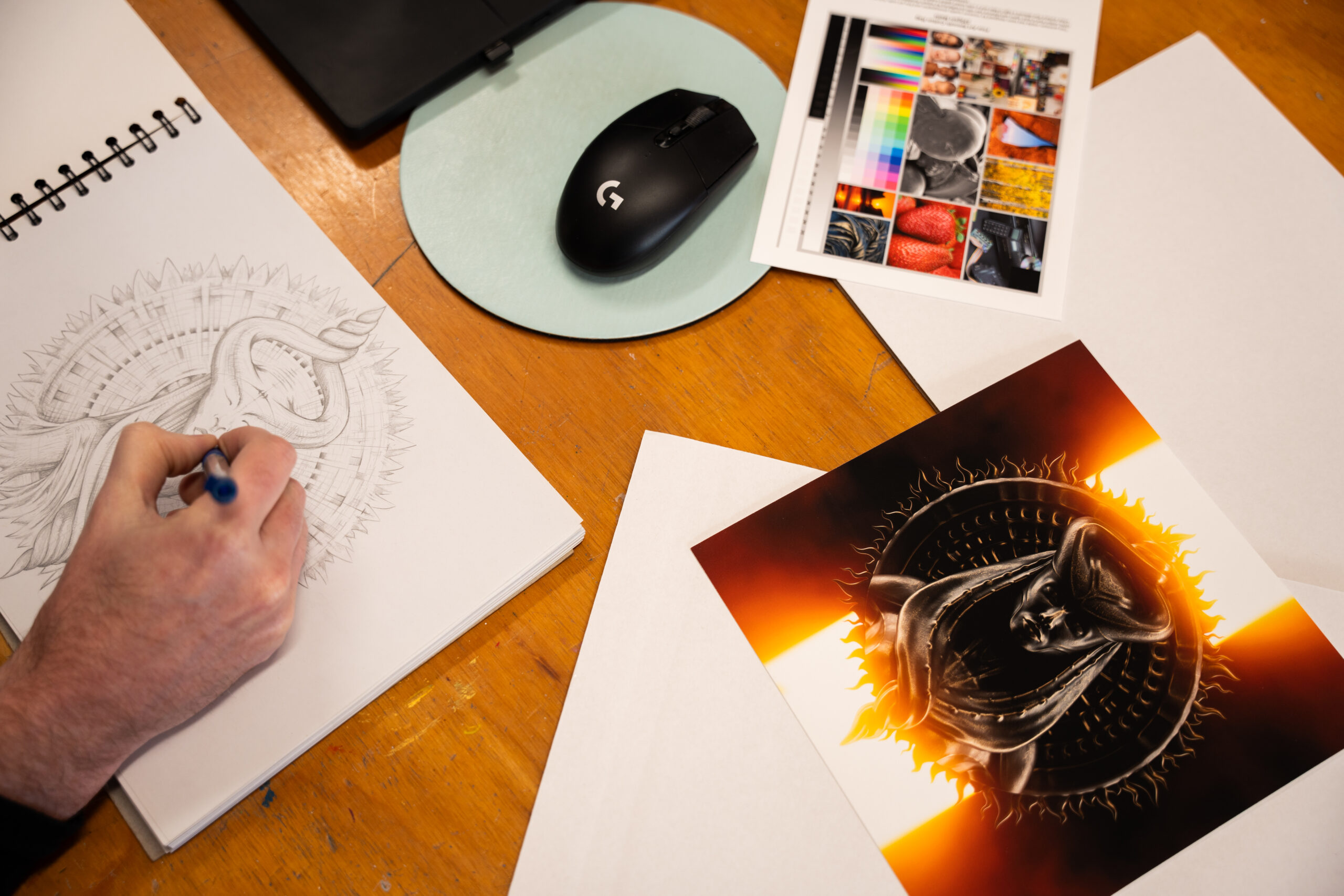
What word of advice would you offer an aspiring creative person?
JL: Be patient and determined. Don’t wait around for things to happen, just start doing them. There are no rules to being creative and the sooner you find your passion and learn to be out of your comfort zone, the easier it will get.
LA: It is inevitable for artists to confront what their art is, in relation to other art. How it can stand and be comfortable on its own identity, even if it may be similar to others. The process may be long and can be a struggle. So be patient and kind to yourself.
RM: Don’t give up. Be patient with yourself. Keep practicing. The most annoying advice ever and yet it’s true.
SA: Take the advice that you would give to others.
TC: Just keep making art. It doesn’t matter how good you or others think it is. Keep moving forward towards the things that interest you. Making good art isn’t important, all that matters is the act of making art itself.
What’s the biggest problem about life in New Zealand? How you would solve it?
RM: Too far away from the rest of the world. When the countries aren’t trying to kill each other, being at the bottom of the globe is frustrating. We don’t have access to the same products without excruciating shipping prices. My favourite bands don’t come down to New Zealand. Flying overseas is insanely costly and lengthy. How would I solve this? Uhh… make millions off my art!
What is your dream of happiness?
LA: Happiness to me is always having purpose. Gosh, I’d be soooo bored without it.
RM: I suppose it’s me living on land with my horses, a dream studio where I create art. I have no worries, my family, my friend and all my animals are happy and healthy. We get to do what we love.
TC: To live close to my friends so they can stop me from being a hermit.
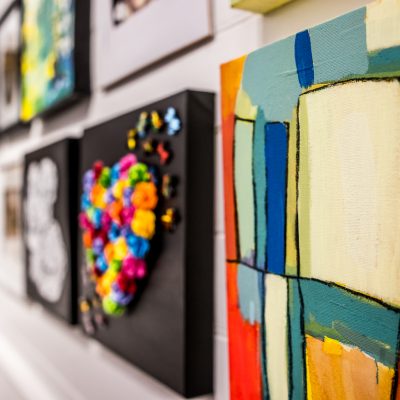
Creative Directory
Explore and connect with creative people, groups & spaces in Tauranga and Western BOP


